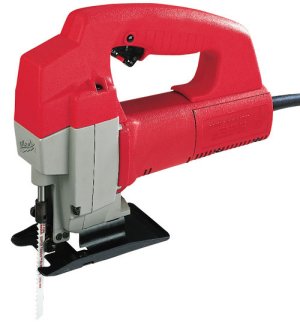jig saw

A jig saw is a hand-held power saw used for cutting curves, such as stenciled designs or other custom shapes, into a piece of wood or other material. A jig saw combines into a convenient package many of the functions of a band saw and a scroll saw. Jig saws are also called saber saws.
The essential parts of a jig saw are a reciprocating saw blade connected to an electric motor. Traditional jigsaws are hand saws, consisting of a handle attached to a small, thin blade.
Jigsaws come in 2 basic styles: D handled and barrel grip. They may also be corded or cordless. The cordless variety are handy in areas where extension cords are difficult to use. They're best suited to cutting wood and wood products. Although they can cut tougher materials, the extra power needed for these applications quickly drains batteries. Cordless jig saws are available from 12 to 18 volts – the higher the voltage, the longer the battery life. Corded jig saws are better able to handle tough cutting jobs or continuous use. They operate at from 3.5 to 6 amps. Higher amp motors give more power and enable the saw to cut thick boards, light metals, and other tough materials.
Before purchasing a jig saw, look to see if the mechanism for adjusting the base plate is sturdy. On less expensive models these are weak and will eventually wobble, making it difficult to cut accurately.
Features
Jig saw blades
Jig saw blades are classified by width, number of teeth per inch (tpi), and material composition. The higher the tpi the smoother the cut; the lower the tpi the quicker the cut. Common types of blade include:
